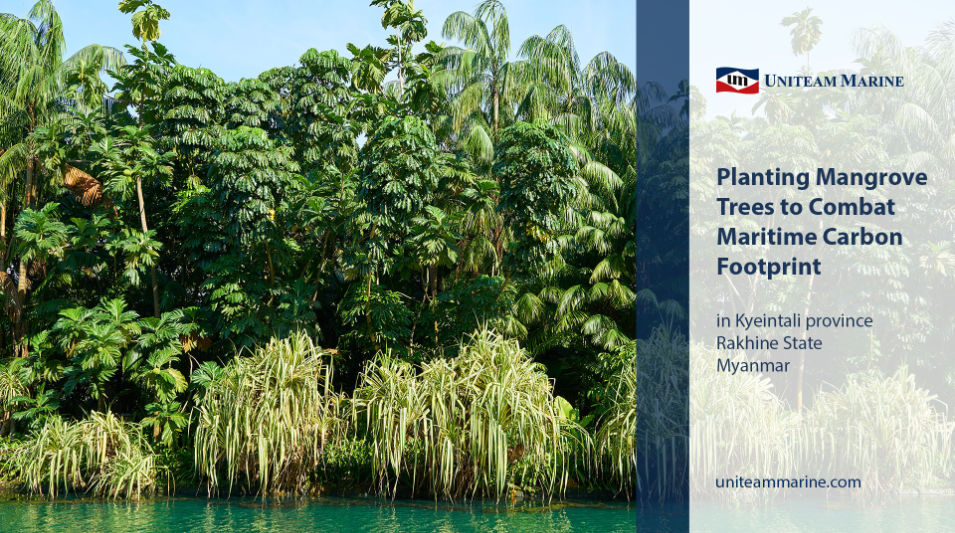
11 Dec Planting Mangrove Trees to Combat Maritime Carbon Footprint
Embarking on a greener journey!
Maritime shipping plays an integral role in global trade, but its environmental impact, particularly in terms of carbon dioxide (CO2) emissions, cannot be ignored.
Uniteam Marine, in collaboration with Stiftunglife, has initiated a project to reduce the carbon footprint associated with maritime activities. The initiative involves planting mangrove trees on behalf of seafarers sailing on the vessels, and for each shore-based team member, coinciding with their birthdays. Commencing in mid-2023, the project will witness the planting of 5,000 trees throughout the year.
Nature’s carbon warriors, mangrove trees, have emerged as invaluable allies in the fight against climate change due to their unique characteristics. Here are the key reasons why mangroves are being championed as carbon mitigators:
Carbon sequestration: Mangroves possess dense root systems that effectively capture and store carbon dioxide from the atmosphere. Their ability to trap organic matter and sediment enables significant carbon sequestration. Remarkably, mangroves can store several times more carbon per unit area compared to terrestrial forests, making them highly efficient in combating CO2 emissions.
Blue carbon reservoirs: Mangrove ecosystems are considered “blue carbon” reservoirs, as they store carbon in coastal and marine environments. These carbon stocks are found in the trees themselves, as well as in the soil and sediments below the water.
Coastal protection: Mangroves serve as natural buffers against coastal erosion and storm surges. These resilient ecosystems protect coastal communities and infrastructure from the impacts of rising sea levels and extreme weather events.
Biodiversity support: Mangrove forests provide a vital habitat for a diverse array of species, including numerous bird species such as the white-bellied sea eagle and the Nicobar pigeon, as well as monkeys, pythons, lizards and rare bats like the pouched tomb bat. Preserving mangroves ensures the maintenance of biodiversity, which is essential for overall ecosystem health and resilience.
The planting of the mangrove trees take place in a protected coastal area in Myanmar. Location: Rakhine Coastal Region Conservation Association (RCA) in Kyeintali province, Rakhine State, Myanmar. The plantation in a protected area gives a certain guarantee that mangroves can grow properly. The planting is done by the staff of the national park.
Similar projects in different countries will follow.
Anja Frauboese, Head of Corporate Communications & Marketing
